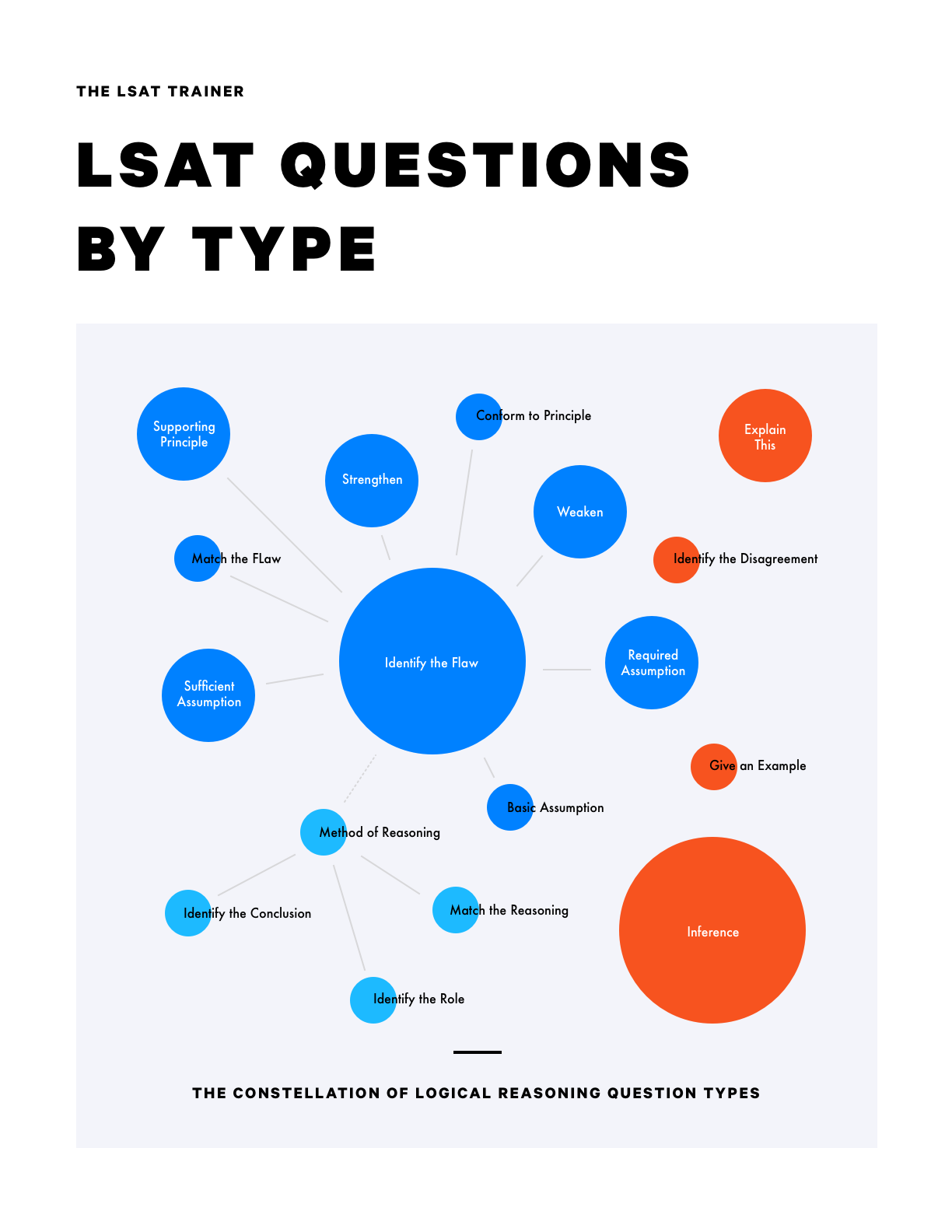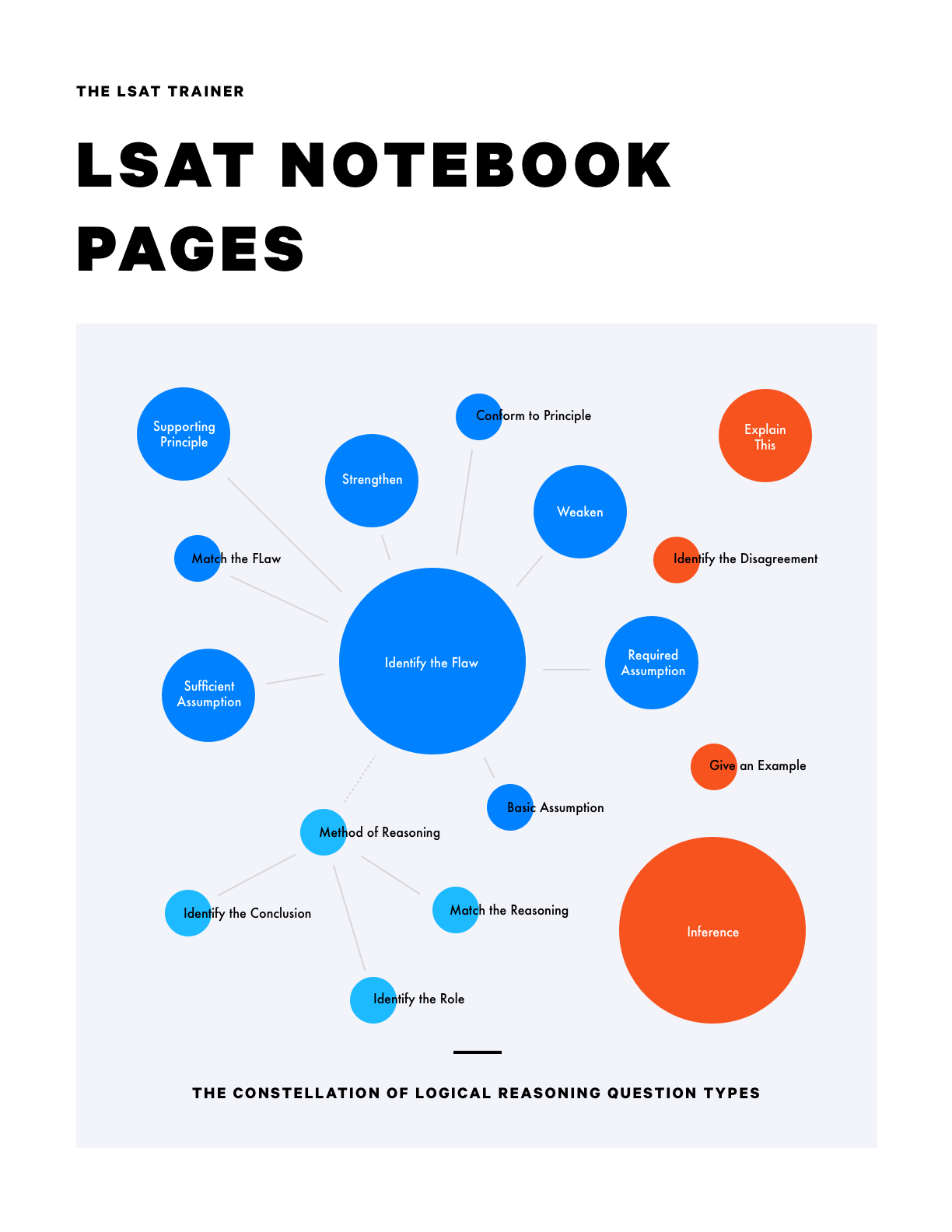Game 1
Step 1
Per the given scenario, write out the seven elements to be placed - J, K, L, M, N, O, and P, and the seven positions to be filled, set in order but separated out to indicate that two are in the morning, three in the afternoon, and two in the evening.
Step 2
Per the first rule, notate that J must go in the evening.
Step 3
Per the second rule, notate that K cannot go in the morning.
Step 4
Per the third rule, notate that L must come after K and before M.
Step 5
We can make and optionally notate a small inference that per the three rules, K, L, M, and J all can’t go in the morning, meaning that the morning must be filled by two of the three elements - N, O, and P - not mentioned in the rules.
Step 6
We can then infer and notate that K - L must go into the afternoon, as they can’t be in the morning and there isn’t enough space for them in the evening.
Step 7
Notate that N, O, and P are not mentioned in the rules.
Game 2 (Option 1)
Step 1
Per the given scenario, we can write out the five elements to be placed - F, G, H, I, and J - and we can lay out the three days to which they can be assigned - Monday, Tuesday, and Wednesday.
Step 2
Per the first rule, we can notate that F and G cannot go together.
Step 3
Per the second rule, we can place I into Wednesday.
Step 4
Per the third rule, we can notate that exactly two elements will be placed into Tuesday.
Step 5
Per the fourth rule, we can cross out H from underneath Monday.
Step 6
Per the fifth rule, we can notate that at least one element must go into Monday.
Step 7
Per the fifth rule, we can also infer that, with four of the five assignments accounted for, the final assignment must go on either Monday or Wednesday.
Step 8
We can notate that J is not restricted by any of the given rules.
Game 2 (Option 2)
Step 1
Per the given scenario, we can write out the five elements to be placed - F, G, H, I, and J - and we can lay out the three days to which they can be assigned - Monday, Tuesday, and Wednesday.
Step 2
Per the first rule, we can notate that F and G cannot go together.
Step 3
Per the second rule, we can place I into Wednesday.
Step 4
Per the third rule, we can notate that exactly two elements will be placed into Tuesday.
Step 5
Per the fourth rule, we can cross out H from underneath Monday.
Step 6
Per the fifth rule, we can notate that at least one element must go into Monday.
Step 7
Per the fifth rule, we can also infer that, with four of the five assignments accounted for, the final assignment must go on either Monday or Wednesday.
Step 8
Going back to the fourth rule, we can create two frames, one with H in Tuesday and one with H in Wednesday.
Step 9
For the frame in which H is Wednesday, we can infer that, per the first rule, F and G must be split up, with one going Monday and the other Tuesday. That means that J, the only remaining element, must fill the final spot on Tuesday.
Step 8
We can notate that J is not restricted by any of the given rules.
Game 3 (Option 1)
Step 1
Per the given scenario, we can write out the six elements -- the three types of clients -- I, S, and T, each with two types of requests - w, and v - and we can lay out the three options for service time, in order from shortest to longest - 1, 2, and 3.
Step 2
Per the first rule, we can notate that each company’s w must be assigned either to the same goal or a shorter goal than each company’s v.
Step 3
Per the second rule, we notate that Iv must come before both Sv and Tv.
Step 4
Per the third rule, we can notate that Sw must come before Tw.
Step 5
We can notate that Iw was not mentioned in any of the rules.
Game 3 (Option 2)
Step 1
Per the given scenario, we can write out the six elements -- the three types of clients -- I, S, and T, each with two types of requests - w, and v - and we can lay out the three options for service time, in order from shortest to longest - 1, 2, and 3.
Step 2
Per the first rule, we can notate that each company’s w must be assigned either to the same goal or a shorter goal than each company’s v.
Step 3
Per the second rule, we notate that Iv must come before both Sv and Tv.
Step 4
Per the third rule, we can notate that Sw must come before Tw.
Step 5
One way we can frame this game is around the limited options we have for where to place the two T’s, both of which have restrictions for how early they can go.
Tv must go after Iv and so can’t be assigned to 1, and Tw must go after Sw and so also can’t be assigned to 1. In addition, Tv can’t be before Tw. If we put all that together, we have three options for how to assign the T’s: both Tv and Tw in 2, Tw in 2 and Tv in 3, or both Tw and Tv in 3. We can create three frames around these three options.
Step 6
For the first frame, per the second rule, Iv must be assigned to 1.
Step 7
For the first frame, per the third rule, Sw must be assigned to 1.
Step 8
For the first frame, per the first rule, since Iv is in 1, Iw must be assigned to 1.
Step 9
For the second frame, per the second rule, Iv must be assigned to 1 or 2.
Step 10
For the second frame, per the third rule, Sw must be assigned to 1.
Step 11
For the third frame, per the second and third rules, we know that Iw, Iv, and Sw must all go before the T’s, and thus in either 1 or 2. We want to mentally keep in mind that per the first rule, Iv can’t be assigned before Iw.
Step 12
We can notate that Iw was not mentioned in any of the rules.
Game 4
Step 1
Per the given scenario, we can write out the seven elements to be placed - G, H, and J, which cover finance (indicated with subscript f), Q, R, and S, which cover nutrition (indicated with a subscript n), and Y, which covers wildlife (indicated with a subscript w). We can also lay out the seven positions, in order, to be filled.
Step 2
Per the first rule, we can notate that we cannot have consecutive f’s, and we cannot have consecutive n’s.
Step 3
Per the second rule, we can notate that S before Q must mean Q is third. We can also notate the contrapositive: if Q is not third, Q must be before S.
Step 4
Per the third rule, we can notate that S must before Y.
Step 5
Per the fourth rule, we can notate that G must come after J but before R.



